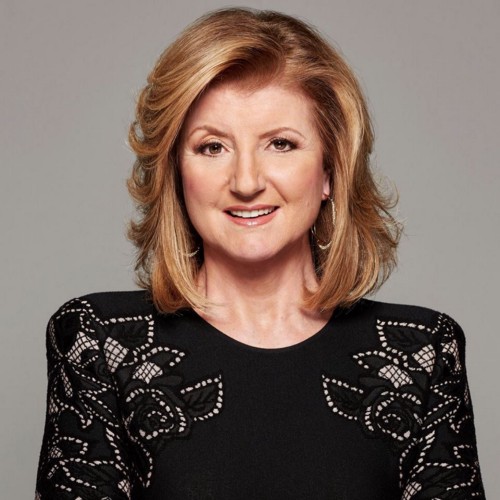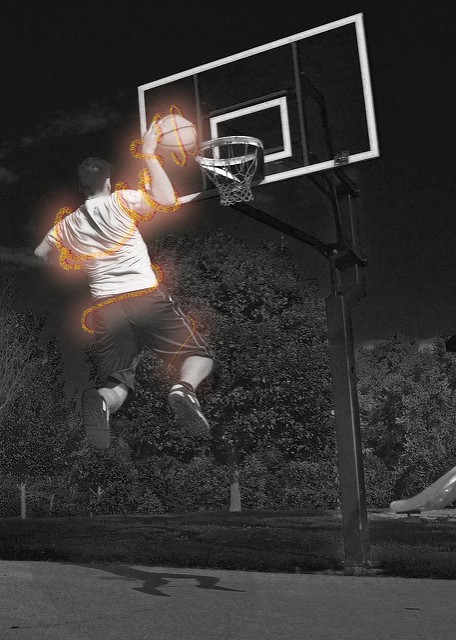The fundamental flaw at the heart of our misguided definition of success is the belief that overworking is the route to high performance and exceptional results. One easy way to see the folly of this belief is to look at the world of sports, where performance is objectively quantified and measurable. The sports world, the source of many metaphors in the business world — “home run,” “slam dunk,” “dropping the ball,” “heavy hitters,” “step up to the plate,” and so forth — is, in fact, way ahead of the business world in its thinking about productivity and burnout.
Top athletes are all about results. And because sports are endlessly quantifable, it’s often very easy to measure just what does and doesn’t work. The tough, hard-hitting world of elite sports is increasingly embracing meditation, yoga, mindfulness, enough sleep, and napping precisely because athletes and coaches realize that they work. And for the shrinking pool of doubters, there is perhaps no better way to see the tangible effects of mindfulness and stress reduction tools on performance than in the world of sports.
One of the most interesting — and widely cited — studies came out of Stanford. Over ten years ago, Cheri Mah, a researcher at the Stanford Sleep Disorders Clinic, was looking into the impact of sleep on the brain. Several of the subjects in her research were on the Stanford swim team. They revealed to Mah that during the portions of the test when they were asked to get more sleep they swam better and set personal bests. So Mah set out to see how strong the connection was between increased sleep and increased performance.
Over three seasons, Mah had eleven Stanford basketball players keep a normal schedule for a few weeks and then, for five to seven weeks, had them take naps, eat carefully, and try to get ten hours of sleep a night. All eleven players saw improvements in their performance. Three- point shooting went up 9.2 percent. Free throws were up 9 percent. Not only did on- court performance improve, but players said their moods were lifted and that they generally felt less fatigued. “What these findings suggest is that these athletes were operating at a sub- optimal level,” Mah said. “They’d accumulated a sleep debt. . . . It’s not that they couldn’t function — they were doing fine — but that they might not have been at their full potential.”
And all over the sports world, new practices are being introduced:
• In 2005, the U.S. Olympic Committee, in consultation with sleep expert Mark Rosekind, upgraded the rooms at its Colorado Springs training center. The renovation consisted of better mattresses, blackout curtains, and encouragement for the athletes to aim for nine or ten hours of sleep. And many have taken the advice to heart. “Sleep is huge in my sport,” says Olympic marathoner Ryan Hall. “Recovery is the limiting factor, not my ability to run hard. I typically sleep about eight to nine hours a night but then I make sure to schedule 90 minute ‘business meetings’ — aka naps — into my day for an afternoon rest.” • The Dallas Mavericks partnered with Fatigue Science from Vancouver to monitor players’ sleep and compare it with their on- court performance using a wristband device. Fatigue Science founder Pat Byrne explained the logic: “If a player is sleeping six hours a night and says, ‘I feel fine,’ we can actually say, ‘We can make your reaction time better if you’re sleeping eight hours.’ We can prove it to you, we can show you.”
• Los Angeles Lakers superstar Kobe Bryant will often linger at the team hotel before a game to get more sleep. He’s also done meditation — a practice brought in by former coach Phil Jackson. Jackson also taught the concept of “one breath, one mind” to his players and had them engage in exercises such as a day of silence. “I approached it with mindfulness,” he told Oprah. “As much as we pump iron and we run to build our strength up, we need to build our mental strength up . . . so we can focus . . . so we can be in concert with one another.”
• When Michael Jordan was the star of the Chicago Bulls, the team worked with meditation teacher George Mumford. “When we are in the moment and absorbed with the activity, we play our best,” Mumford explained. “That happens once in awhile, but it happens more often if we learn how to be more mindful.” And a video of four- time NBA MVP LeBron James meditating during a timeout became a hit on YouTube.
• Former Miami Dolphins running back Ricky Williams used to meditate before every game, and later ended up teaching a class on meditation at Nova Southeastern University in Florida. “This is my passion,” he said. “I think a lot of people are so used to being stressed, they don’t realize they’re stressed. And I was one of those people.”
• Tennis great Ivan Lendl used mental exercises to deepen his concentration. He would schedule downtime for relaxing and recharging often by taking naps.
Since Lendl became Andy Murray’s coach in 2012, the four- time grand slam runner- up won the U.S. Open in 2012 and Wimbledon in 2013. Charlie Rose, in an interview with Murray, described what it’s like watching Murray and other great pro players: “You see the ball coming off the racket . . . it almost looks like slow motion.”
What a great image to hold in mind: a performer at the top of his game — rested, recharged, and focused; time slowing down, the ball moving in slow motion, allowing him to make the best decision and execute it. I have found that mindfulness and stress- reduction techniques do the exact same thing for the rest of us. In a rushed, harried, stressed out state, the onslaught of what we have to do can go by in a jumbled blur. But rested and focused, what’s coming next appears to slow down, allowing us to manage it with calm and confidence.
As Tony Schwartz, founder of the Energy Project, says, with exercise, it’s during rest and downtime that muscle growth occurs. To achieve peak physical fitness, we push ourselves hard in short bursts of high intensity, and then we rest and recover. And that’s exactly how we should live our lives for overall performance and well-being.
“The same rhythmic movement serves us well all day long, but instead we live mostly linear, sedentary lives,” Schwartz writes. “We go from email to email, and meeting to meeting, almost never getting much movement, and rarely taking time to recover mentally and emotionally. . . . The most effective way to operate at work is like a sprinter, working with single- minded focus for periods of no longer than 90 minutes, and then taking a break. That way when you’re working, you’re really working, and when you’re recovering, you’re truly refueling the tank.”
As with elite athletes who put in the necessary preparation — both mentally and physically — you’ll see a tangible difference in your work performance. In a study last year at the University of Washington, computer scientist David Levy had a group of human resources managers go through an eight- week mindfulness and meditation course. He then gave them some challenging office tasks, involving email, instant messages, and word processing. Members of the group who had gone through the training could concentrate for longer stretches of time, were less distracted, and, most important, had lower stress levels. “Meditation is a lot like doing reps at a gym,” Levy said. “It strengthens your attention muscle.”
We don’t have to have a four- foot vertical leap to be like Michael Jordan and perform at our best. All we need is the commitment to get enough sleep, take time to recharge our mental and emotional batteries, put away our phones and laptops and tablets regularly, and try to introduce some stress- reduction tools into our lives. Mindfulness, yoga, prayer, meditation, and contemplation aren’t just tools reserved for retreats over long weekends anymore — they are the ultimate everyday performance enhancers.
Excerpt from Thrive pp. 88–93


